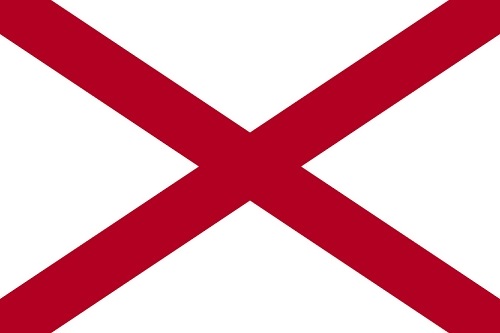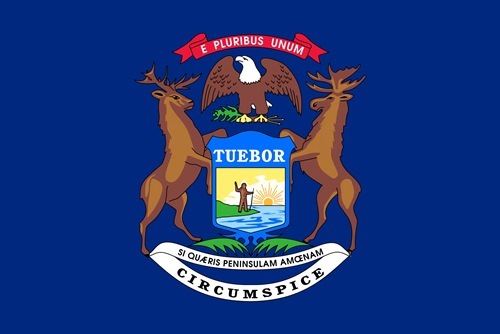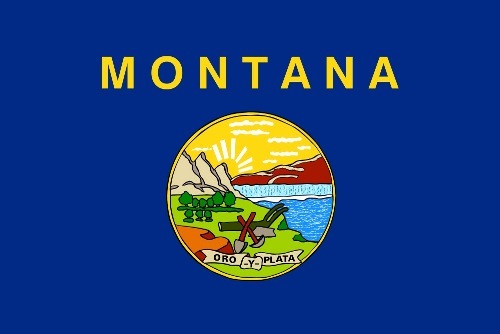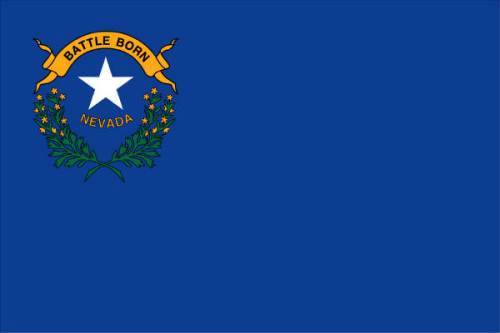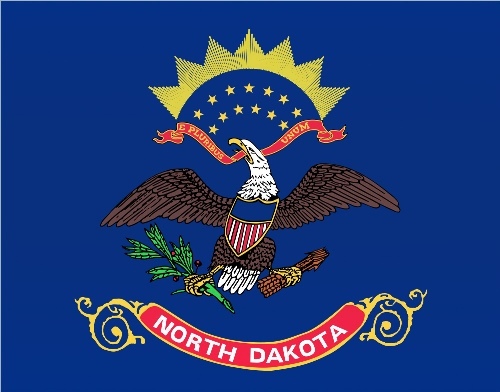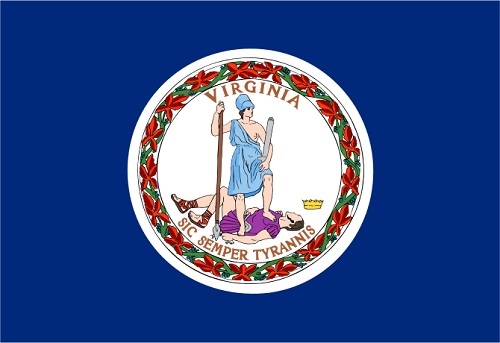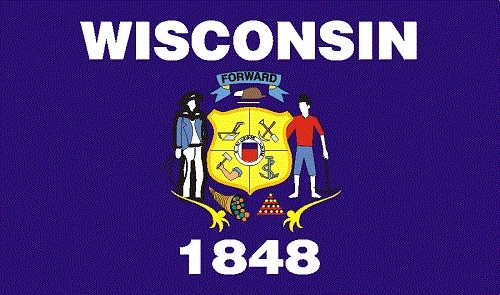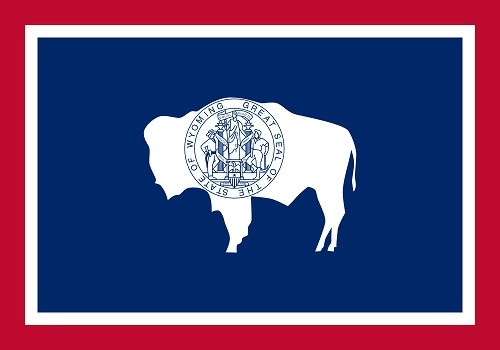50 states of the USA
Alabama
Unforgettable
Capital City: Montgomery
Known as the Heart of Dixie, Alabama became the 22nd state in 1819. The name Alabama is derived from an Indian word meaning “thicket clearers.” Alabama has been at the center of many American battles-between white settlers and Native Americans, and between the North and South in the Civil War. The state also is home to the first of three Space Camps in the United States. These camps let kids experience what it would be like to be in outer space. The capital is Montgomery, and state flower is the camellia.
Origin of state’s name: Means “tribal town” in the Creek Indian language.
Alaska
North! To Alaska
Capital City: Juneau
The nickname of the 49th state, Alaska, is the “Last Frontier.” Purchased from Russia for $7 million in 1867, Alaska is the largest state in area and is the largest peninsula in the Western Hemisphere. Mt. McKinley in the Alaska Range is North America’s highest peak at 20,320 feet and one of the greatest challenges for mountain climbers. Juneau is the state’s capital, and the state flower is the pale-blue forget-me-not.
Origin of state’s name: Based on an Aleut word “alaxsxaq” literally meaning “object toward which the action of the sea is directed” or more simply “the mainland.”
Arizona
Grand Canyon State
Capital City: Phoenix
The “Grand Canyon State,” Arizona, was the 48th state to join the U.S. in 1912- the last of 48 contiguous (connected) states to join the Union. The state’s name comes from arizonac, from two Papago Indian words meaning “place of the young spring.” Arizona has a very dry climate and is known for its cactus plants. In fact, the state flower is the saguaro cactus blossom.
Origin of state’s name: Spanish interpretation of “arizuma,” an Aztec Indian word meaning “silver-bearing.” Also based on Pima Indian word “arizonac” for “little spring place.”
Arkanzas
The Natural State
Capital City: Little Rock
Nicknamed the “Land of Opportunity,” Arkansas, which joined the Union in 1836, was the 25th state. The early French explorers of the state gave it its name, which is probably a phonetic spelling for the French word for “downriver” people, a reference to the Quapaw Indians and the river along which they settled. Arkansas is the only state in which diamonds have been mined, although today the mine operates only as a tourist attraction. The state flower is the apple blossom.
Origin of state’s name: French interpretation of a Sioux word “acansa,” meaning “downstream place.”
California
Find Yourself Here
Capital City: Sacramento
Nicknamed the “Golden State,” California is the third largest state in area after Alaska and Texas. The discovery of gold and the immigration in 1849 of thousands of “forty-niners” in search of the precious metal helped California’s admission into the Union in 1850. Today, California, land of the giant redwoods, has the highest population of any state in the nation and is America’s principal agricultural state. It is also the home of Hollywood, the center of America’s movie and television industry. Its capital is Sacramento and the state flower is the golden poppy.
Origin of state’s name: Named by Spanish after Califia, amythical paradise in a Spanish romance, written by Montalvo in 1510.
Colorado
Colorful Colorado
Capital City: Denver
Called the “Centennial State,” because it became the 38th state when the U.S. turned 100 in 1876, Colorado is most closely associated with the Rocky Mountains and has numerous peaks over 14,000 feet. The state’s name comes from a Spanish word meaning “red” or “ruddy,” the color of much of the state’s terrain. Today, Colorado is known for its vast cattle ranges, agricultural acreage, and snow-covered mountains that are ideal for winter sports. Its capital is Denver and state flower is the Rocky Mountain columbine.
Origin of state’s name: Taken from the Spanish for the “colorred” and was applied to the Colorado river.
Connecticut
We’re Full Of Surprises
Capital City: Hartford
One of the original 13 states, Connecticut is known as the “Constitution State.” It gets its name from an Algonquian word meaning “land on the long tidal river.” Hartford has been the capital of Connecticut since 1875 and the state flower is the mountain laurel.
Origin of state’s name: Based on Mohican and Algonquin Indian words for a “place beside a long river”.
Delaware
The First State
Capital City: Dover
With the state motto of “Liberty and Independence,” Delaware is often called the “First” or “Diamond State.” Today, Delaware is one of the most industrialized states, known for its chemical research. The state flower is the peach blossom.
Origin of state’s name: Named after an early Virginia governor, Lord De La Warr.
Florida
Sunshine State
Capital City: Tallahassee
Called the “Sunshine State,” Florida is known for its balmy, sunny weather and beautiful beaches. Statehood for Florida came in 1845. Florida’s state flower is the orange blossom, which is particularly fitting because oranges are a main export of the state. Because of its shape and location, a long peninsula between the Atlantic Ocean and the Gulf of Mexico, Florida attracts millions of visitors each year to its many seaside resort areas. Its capital is Tallahassee.
Origin of state’s name: Named on Easter 1513 by Ponce de Leonfor Pascua Florida, meaning “Flowery Easter”.
Georgia
Georgia On My Mind
Capital City: Atlanta
Known today as the “Peach State,” Georgia, founded in 1733, is one of the original 13 states. It was named in honor of England’s King George II. During the Civil War, the fall of Atlanta was a crucial turning point in the defeat of the South. Today, Atlanta, which became Georgia’s capital in 1868, is a thriving city with major national corporations, and it is considered the economic and cultural center of the Southeast. The state flower is the Cherokee rose.
Origin of state’s name: Named for King George II of England.
Hawaii
The Islands Of Aloha
Capital City: Honolulu
Known as the “Aloha State” (in Hawaiian, “aloha” means “hello”), Hawaii is a group of volcanic islands in the central Pacific Ocean that together became the 50th state in 1959. The state’s name is possibly derived from a native Hawaiian word for homeland, hawaiki or owhyhee. Today, Hawaii, whose capital is Honolulu, is often called the “Crossroads of the Pacific” and is a popular vacation spot. The colorful hibiscus is the state flower.
Origin of state’s name: Could be based on native Hawaiian word for homeland, “Owhyhee”.
Idaho
Discover Idaho
Capital City: Boise
Idaho, the 43rd state, joined the U.S. in 1890. The state is appropriately shaped like a logger’s boot, and logging as well as mining are big industries in the state. But the state is probably best known for its potatoes. The state’s name is thought to be an Indian name, Ee-dah-hoe, which means “gem of the mountains.” Idaho has a rugged landscape with some of the largest unspoiled natural areas in the country. Boise is the capital and the state flower is the syringa.
Origin of state’s name: Idaho is a coined or invented word, and is not a derivation of an Indian phrase “E Dah Hoe (How)” supposedly meaning “gem of the mountains.”
Illinois
A Million Miles From Monday
Capital City: Springfield
Named for the Illinois Indians, Illinois became the 21st state in 1818. Its capital is Springfield, which is the home of the Abraham Lincoln Presidential Library and Museum.
Origin of state’s name: Algonquin Indian for “warriors”.
Indiana
The Welcome Mats Always Out
Capital City: Indianapolis
Indiana means “land of the Indians.” It joined the Union in 1816 as the 19th state. Today, Indiana is a state of mostly small towns and midsize cities. Its largest city and capital is Indianapolis, where the nation’s most famous auto race, the Indianapolis 500, is held each year. The state’s residents are commonly referred to as “Hoosiers” although no one seems certain just how the name originated. The peony is the state flower.
Origin of state’s name: “Land of the Indians”.
Iowa
Come Be Our Guest
Capital City: Des Moines
Although it is sometimes called the “Corn State,” Iowa really is a breadbasket for the U.S., with 90 percent of its land devoted to farming. The main products are corn and hogs. Named for the Iowa River, which was named for the Iowa, or Ioway, Indians, Iowa joined the Union in 1846 as the 29th state. The wild rose is the state flower and the capital is Des Moines.
Origin of state’s name: The “Hawkeye State” was first suggested by James G. Edwars as a tribute to indian leader Chief Black Hawk.
Kansas
Heart Of America’s West
Capital City: Topeka
Known as the “Sunflower State,” Kansas became the 34th state in 1861. The state’s name comes from the Kansa or Kaw Indians and is a Sioux Indian term meaning “south wind people.” Within Kansas’s borders is the magnetic center mark for all of North America. All land surveys in the U.S., Canada, and Mexico use this as a reference point. The geographic center of the 48 contiguous (connected) states is located in a Kansas pasture. The native sunflower is the state flower and the capital is Topeka.
Origin of state’s name: From the Sioux Indian for “south wind people”.
Kentucky
Commonwealth of Always In Season
Capital City: Frankfort
Daniel Boone and other frontiersmen settled in Kentucky, the “Bluegrass State,” in 1769. Its name comes from the Iroquois Indian word “Ken-tah-ten,” or “land of tomorrow.” Admitted into the Union in 1792, Kentucky is the 15th state and the first state west of the Appalachian Mountains. Today, Kentucky is associated with coal mines and horse farms and racing. America’s most prestigious horse race, the Kentucky Derby, is held in Louisville annually. The state flower is the goldenrod, the cardinal is the state bird and Frankfort is the capital.
Origin of state’s name: Based on the Iroquois Indian word “Ken-tah-ten,” meaning “land of tomorrow”.
Louisiana
Come As You Are Leave Different
Capital City: Baton Rouge
Situated in the Deep South, Louisiana, the “Pelican State,” has a colorful history and was named in honor of King Louis XIV. A strong French influence is still evident throughout the state—its capital city is named Baton Rouge, French for “red stick,” because the French- Canadian explorer Pierre Le Moyne d’Iberville visited the area in 1699 and observed a red cypress post. Today the city of New Orleans is known for its Mardi Gras and jazz festivals.
Origin of state’s name: Named in honor of France’s King Louis XIV.
Maine
Maine Is On The Move
Capital City: Augusta
Its name comes from an ancient French province of the same name. The most sparsely populated state east of the Mississippi River, it’s appropriately called the “Pine Tree State,” as 90 percent of its land is forest. Not surprisingly, most of Maine’s economy is related to timber and the production of paper and paper products although the millions of tourists who flock each summer to “Vacationland” are a significant source of revenue. The state flower is the white pine cone and tassel.
Origin of state’s name: Assumed to be a reference to the state region being a mainland, different from its many surrounding islands.
Maryland
So Many Things To Do So Close Together
Capital City: Annapolis
One of the original 13 states to join the Union (in 1788), Maryland is in the middle of the Eastern Seaboard. It’s believed that Lord Baltimore, who received a charter for the land in 1632, named the state after Queen Henrietta Maria, wife of King Charles I. Maryland is known as the “Free State”; its flower is the black-eyed susan; and its capital is Annapolis, home of the U.S. Naval Academy.
Origin of state’s name: Named to honor Henrietta Maria, wife of England’s King Charles I
Massachusetts
We’d Love To Show You Around
Capital City: Boston
One of the six New England states, and one of the first 13 states in the Union (it entered in 1788), Massachusetts is known as the “Old Colony State.” The Puritans named their colony after a local Indian tribe whose name means “a large hill place.” The birthplace of many of the ideals of the American Revolution, Massachusetts attracted people who believed in self-government. It’s appropriate that the state flower is the mayflower, also known as the trailing arbutus.
Origin of state’s name: Named after local Indian tribe whose name means “a large hill place”.
Michigan
Great Things To See And Do
Capital City: Lansing
Michigan was the 26th state, admitted into the Union in 1837. Called the “Great Lakes State” Lakes. Michigan has an unusual geography, as it consists of two land masses – the Upper Peninsula and the mitten-shaped Lower Peninsula. Detroit, its largest city, is known worldwide as the center of the American auto industry.
Origin of state’s name: Based on Chippewa Indian word “meicigama” meaning “great water” and refers to the Great Lakes.
Minnesota
Explore Minnesota
Capital City: Saint Paul
The “Land of 10,000 Lakes,” Minnesota got its nickname because there are more than 12,000 lakes throughout the state. Its name comes from the Dakota (Sioux) word for the Minnesota River’s “sky-tinted waters.” The Minnesota Territory was formed in 1849 from what had been part of the Northwest Territory, and Minnesota joined the Union in 1858. The state flower is the pink and white lady’s slipper, and the capital is St. Paul.
Origin of state’s name: Based on the Dakota Sioux Indian word for “sky-tinted water,” referring to the Minnesota River or the state’s many lakes.
Mississippi
The South’s Warmest Welcome
Capital City: Jackson
Spelling the name of this state out loud is a catchy way to remember it, and a way to make sure you spell it correctly. The name “Mississippi” comes from an Indian word meaning “great waters” or “father of waters.” Considered part of the Deep South, Mississippi, with its rich soil and many rivers, is an agricultural state. The state flower is the fragrant magnolia blossom, and the capital is Jackson.
Origin of state’s name: Possible based on Chippewa Indian words “mici zibi,” loosely meaning great river.
Missouri
Show Me Missouri
Capital City: Jefferson City
Missouri is called the “Show Me State,” because its people have a reputation for believing only what they see. Its name is an Algonquin Indian term meaning “river of the big canoes.” Originally home to a number of Indian tribes, the state entered the Union in 1821. Today, more than half the population lives in Missouri’s two major cities — Kansas City and St. Louis. The dogwood is the state tree, the bluebird is the state bird and the capital is Jefferson City.
Origin of state’s name: Named after Missouri Indian tribe whose name means “town of the large canoes”.
Montana
Big Sky Country
Capital City: Helena
Montana is known as “Big Sky Country” because of its vast size and rolling plains. The name Montana comes from the Spanish word Montana, meaning “mountainous,” although the eastern part of the state consists of gently rolling pastureland. Today Montana is known as a tourist destination for those drawn to its many trout streams and wide open spaces. Its capital is Helena and the state flower is the bitterroot.
Origin of state’s name: Based on Spanish word for “mountainous”.
Nebraska
Genuine
Capital City: Lincoln
Its nickname, “Cornhusker State,” refers to the way that corn (a leading product of the state) was commonly harvested, “husking” it by hand, before the invention of husking machinery. Another nickname, the “Beef State,” refers to one of Nebraska’s main industries, cattle. Omaha has been a major meatpacking center since the 1880s. Although Omaha was the territorial capital, Lincoln, named in honor of the 16th president, is the state capital. The flower is the goldenrod.
Origin of state’s name: Name based on an Oto Indian word that means “flat water,” referring to the Platte River.
Nevada
Discover Both Sides Of Nevada
Capital City: Carson City
Nevada’s name comes from the Spanish word meaning “snow clad” — a reference to the snow- covered peaks of the Sierra Nevada. Nevada is in a mountain region that includes semiarid grasslands and sandy deserts, and is the most arid (dry) state in the nation. Like oases in the desert, Nevada’s two main cities — Las Vegas and Reno — attract fortune seekers from around the world hoping to strike it rich in the many casinos located there.
Origin of state’s name: Called the “Silver State” because of its large silver mine industries. Named as the “Sage State” and the “Sagebrush State” for the wild sage that grows there prolifically.
New Hampshire
The Road Less Traveled
Capital City: Concord
New Hampshire was named after the English county of Hampshire. New Hampshire is called the “Granite State” because of its numerous granite quarries; the nickname may also reflect the state’s attachment to tradition and its history of a frugal government. There are no general sales or individual income taxes, which fits with the state motto of “Live free or die.” A relatively small state, New Hampshire plays a major role every four years in the presidential election, as it holds the first primary election.
New Jersey
New Jersey and You Are Perfect Together
Capital City: Trenton
It was named after the island of Jersey in the English Channel. New Jersey is referred to as the “Garden State” because of its fertile farmland. The state flower is the purple violet. Atlantic City, a resort town and home to the Miss America pageant, attracts visitors from around the world.
New Mexico
Land of Enchantment
Capital City: Santa Fe
In 1540, the Spanish conquistador Coronado trekked through the area known today as New Mexico in search of the fabled seven cities of gold. New Mexico, called the “Land of Enchantment,” was the 47th state, entering the Union in 1912. Part of the “Old West,” New Mexico was a place known for cowboys and cattle drives. The influence of the Apache Indians who live there is evident in the artwork and culture. The Pueblo Indian presence is also very apparent, most visibly in the tribe’s buildings. The state also has a large Hispanic population, as New Mexico was under Spanish control from the 16th century until about 1846.
New York
Love New York
Capital City: Albany
The Dutch West India Company established the first settlement at Fort Orange near present day Albany in 1624 and another in New Amsterdam on the site of present day Manhanttan a year later. New York is known as the “Empire State.” The state includes everything from skyscrapers in Manhattan to rivers, mountains, and lakes in upstate New York. Today, New York has the third largest population (after California and Texas), and remains the financial center of the country. The state flower is the rose, and the capital is Albany.
Origin of state’s name: Named after England’s Duke of York.
North Carolina
A Better Place To Be
Capital City: Raleigh
The first European settlement in North Carolina is the famous Lost Colony of Roanoke Island that vanished sometime after 1587. North Carolina is the northern portion of the original 1629 land grant made by England’s King Charles I, which was named in his honor (Carolus is Latin for Charles). Today, North Carolina is a growing research center and banking state. The capital of the “Tar Heel State” is Raleigh, and the dogwood blossom is the state flower.
Origin of state’s name: Taken from “Carolus,” the Latin word for Charles and named after England’s King Charles I.
North Dakota
Discover The Spirit
Capital City: Bismarck
Both rural and agricultural, with grain farms and cattle ranches, North Dakota gets its name from the Dakota division of the Sioux Indians who lived on the plains before the Europeans arrived. “Dakota” means “friend.” North Dakota was one of the last areas of the frontier to be settled by non-Native Americans, and even today, it’s not a highly populated state. North Dakota joined the Union in 1889 as the 39th state. Appropriately, the state flower is the wild prairie rose.
Ohio
Heart Of It All
Capital City: Columbus
The land we call Ohio today was part the Northwest Territory that the United States won by defeating the British in the Revolutionary War. The state gets its name from the river that forms its southern border. Ohio is an Iroquois word meaning “great water.” The state tree is the buckeye. Highly populated, Ohio is situated between the Eastern Seaboard and the Midwest, and is known for the fact that eight presidents were either born or lived there. The flower is the scarlet carnation.
Oklahoma
Native America
Capital City: Oklahoma City
Congress opened up 2 million acres for white settlement (it was previously open only to Native Americans who were forced to leave their homelands), and the first of a number of land runs began. Some of the state’s settlers were called “Sooners” because they had already staked their land claims before the land was officially opened for settlement. Oklahoma was admitted as the 46th state in 1907. The state flower is the mistletoe, a favorite for kissing under during the winter holidays.
Origin of state’s name: Based on Choctaw Indian words for “redman”.
Oregon
Things Look Different Here
Capital City: Salem
Spanish sailors in search of a northwest passage were the first Europeans to see what is known today as Oregon. Settlers traveling in wagon trains over the Oregon Trail in the 1840s followed the missionaries who had come in the 1830s. Oregon is a state of great natural beauty with places such as Crater Lake National Park and the Columbia River Gorge. Its mountains, covered in forests, make Oregon the leading state in the production of wood products. The state flower is the Oregon grape.
Origin of state’s name: Origin and meaning of name unknown, may have been derived from that of the Wisconsin River shown on a 1715 French map as “Ouariconsint.”
Pennsylvania
Memories Last A Lifetime
Capital City: Harrisburg
Although Swedes and Dutch were the first European settlers, William Penn, a Quaker, named Pennsylvania in honor of his father by combining the name Penn and the Latin term sylvania, which translates as “woodlands,” to come up with “Penn’s woodlands.” Known as the “Keystone State,” Pennsylvania is one of the original 13 colonies. Today, two major cities dominate the state — Philadelphia, home of the Liberty Bell, Constitution Hall, and a thriving metropolitan area, and Pittsburgh, a busy inland river port. The Amish, a group of people who live without the use of modern technology, live in the countryside of Pennsylvania.
Rhode Island
And Providence Plantations
Capital City: Providence
Roger Williams and a group of religious followers founded the town of Providence in what is today known as Rhode Island after their banishment from the Massachusetts Bay Colony. Williams believed in the importance of liberty of conscience, which be-came an important principle in the founding of Rhode Island and ultimately in the founding of the United States. Officially called “The State of Rhode Island and Providence Plantations,” Rhode Island is one of the six New England states and one of the original 13 states of the Union, entering in 1790. It is the smallest state in area in the country.
South Carolina
Smiling Faces Beautiful Places
Capital City: Columbia
Settled by the English in 1670, South Carolina was based on a plantation culture with an aristocratic, wealthy society that was dependent on black slave labor. One of the original 13 colonies, South Carolina was first formed in 1729 when the Carolina colony was divided in two to form North and South Carolina. The attack on Fort Sumter in the Charleston harbor launched the Civil War. After the war, the structure of the state changed. Today South Carolina honors its history and culture while also working to become a global business center. It is fitting that the state tree of the “Palmetto State” is the cabbage palmetto, which also appears on the state flag. The flower is the yellow jessamine.
South Dakota
Great Faces Great Places
Capital City: Pierre
A Great Plains state, South Dakota was named for the Dakota division of the Sioux Indians, and is known as the Coyote State. Admitted simultaneously with North Dakota after the Dakota Territory was divided along the 46th parallel, South Dakota is mainly a rural state. Today, just less than 10 percent of its population is American Indian. South Dakota is known for two monumental sculptures carved into the Black Hills—Mount Rushmore, which honors presidents Washington, Jefferson, Lincoln, and Theodore Roosevelt, and the Crazy Horse Monument, still under construction, which honors the Oglala Sioux war chief. The state flower is the pasqueflower, also called the May Day flower; its blooming is one of the first signs of spring in South Dakota.
Tennessee
Sounds Good To Me
Capital City: Nashville
Called the “Volunteer State,” Tennessee became the 16th state of the Union in 1796. It was the first territory admitted as a state under the federal Constitution. Before statehood, it was known as the Territory South of the River Ohio. Today, the capital, Nashville, is known as a center for country music. Memphis, the largest city in the state, is the place where Elvis Presley first began his legendary musical career. The state flower is the iris.
Origin of state’s name: Named after Cherokee Indian villages called “Tanasi”.
Texas
It’s Like A Whole Other Country
Capital City: Austin
The Republic of Texas achieved its independence from Mexico in 1836, the same year as the famous siege of the Alamo in which pioneers Jim Bowie and Davy Crockett were slain. The “Lone Star State” was the 28th state to join the Union, admitted in 1845. Texas is the second-largest state in the Union in area, after Alaska. Although it has a wild, frontier history, today Texas is a major producer of oil and has important centers of industry and finance. A Texas state historian has said that the state flower, the bluebonnet, “is to Texas what the shamrock is to Ireland.”
Origin of state’s name: Based on a word used by Caddo Indians meaning “friends”.
Utah
The Greatest Snow On Earth
Capital City: Salt Lake City
The state known as Utah began when Brigham Young led a group of Mormon pilgrims seeking freedom from religious persecution into the Great Salt Lake Valley, where they established a settlement in 1847. Utah was admitted as the 45th state in 1896. The capital, Salt Lake City, is also the world headquarters for the Church of Jesus Christ of Latter Day Saints, and Mormons make up 70 percent of the population. The sego lily is the state flower of the “Beehive State.”
Origin of state’s name: Taken from the name of the Ute Indians, whose name means “people of the mountains”.
Vermont
Green Mountain State
Capital City: Montpelier
Vermont is one of the six New England states and became the 14th state in 1791. Some of Vermont’s major industries are dairy farming and tourism. One of the most picturesque states, Vermont has millions of visitors each year who come to see the leaves turn colors in the fall and the snow- covered mountains in the winter. The state flower is the red clover and the tree is the sugar maple. Vermont maple syrup is one of the state’s most popular products.
Origin of state’s name: Based on “verts monts,” French for green mountains.
Virginia
Virginia Is For Lovers
Capital City: Richmond
The Virginia Company founded the first permanent English colony at Jamestown in 1607. Virginia holds an important place in American history, as it was home to many of the founding fathers, including George Washington, Thomas Jefferson, James Madison, George Mason, and Patrick Henry. Four of America’s first five presidents were Virginians. During the Civil War, Richmond, Virginia’s capital, was the capital of the Confederacy. Today, Virginia is a popular tourist spot where people can visit historic places such as Alexandria, Williamsburg, and Mount Vernon, George Washington’s estate. Dogwood is the state flower and the cardinal is the state bird of the “Old Dominion.”
Origin of state’s name: Named for England’s “Virgin Queen,” Elizabeth I.
Washington
A Little Trip To The Extraordinary
Capital City: Olympia
In 1853, the Washington Territory was formed from part of the Oregon Territory. Its coastal location and Puget Sound harbors give it a leading role in trade with Alaska, Canada, and the Pacific Rim. The state has two major mountain ranges — the 7,000-foot Olympic Mountains surrounded by temperate rain forest on the peninsula west of Puget Sound, and the more majestic Cascade Range, which boasts the 14,410-foot Mount Rainier and the volcanic Mount St. Helens, which erupted twice in the 1980s. Although the capital is Olympia, most people live in the metropolitan areas of Seattle-Everett and Tacoma.
Origin of state’s name: Named after George Washington.
West Virginia
Wild And Wonderful
Capital City: Charleston
In 1861, Virginians in the northwestern part of the state defied Virginia’s secession from the United States. The region chose to remain in the Union and form a new state. West Virginia was admitted into the Union in 1863, after conditions requiring the gradual emancipation of slaves had been met. The state motto is “Mountaineers are always free,” and West Virginia lives up to its nickname of the “Mountain State.” With an average altitude of 1,500 feet above sea level, it’s the highest of any state east of the Mississippi River. For a long time, West Virginia was a leading producer of coal in North America, but many people left to pursue better employment opportunities. That trend has turned around, and now the state’s economy is in a more stable condition
Wisconsin
Stay Just A Little Bit Longer
Capital City: Madison
The state is one of the top producers of milk, cheese.
Wyoming
Like No Place On Earth
Capital City: Cheyenne
After the Union Pacific Railroad reached the town of Cheyenne, the capital, in 1867, the population began to grow steadily in the Wyoming Territory, established in 1868. The constitution of the “Equality State” was the first in the world to grant voting rights to women. Wyoming was also the first state to elect a woman governor. People are spread out across the state in small farming and ranching towns, and millions of visitors come to enjoy the Yellowstone and Grand Teton national parks each year. Wyoming is the smallest state in the Union in population.
Origin of state’s name: Based on an Algonquin or Delaware Indian word meaning “large prairie place”.

